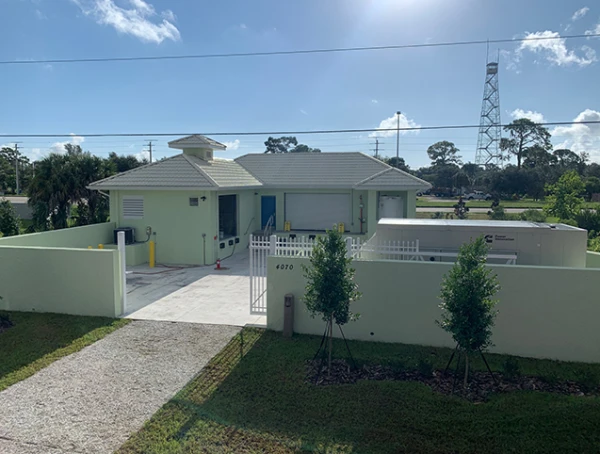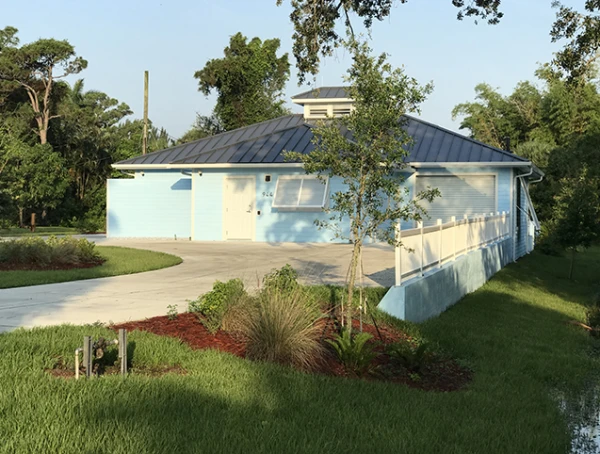Get answers about S2S & LPSS conversion program.
What's the Conversion Program about?
A win-win: This program increases the health of Tampa Bay and the value of your property at the same time
Septic-to-Sewer (S2S) and Low-Pressure Sewer System (LPSS) Conversion is a Countywide program to improve water and sewer service and Protect water quality in Tampa Bay natural water systems by replacing septic systems and Low-Pressure Sewer Systems. It is a multiyear program and will be constructed in phases.
What’s in it for you?
Studies have shown that homes with central sewer connections have much higher market value than homes with septic systems. Also, not having a septic system means no more long-term maintenance expenses for it.
Project purpose
Hillsborough County is committed to removing septic systems and connecting homeowners to central sewer services.
This will divert nitrogen-rich household waste to a wastewater treatment plant, where much more nitrogen can be removed by advanced technologies, instead of directly into the environment. This helps protect our coastal waters from the problems that can happen such as algal blooms, seagrass losses, fish killings and manatee deaths when too much nitrogen is released into the environment.
Why should I convert from septic to sewer?
A traditional septic system consists of an underground tank (called the septic tank) that collects household wastewater and a soil treatment area (called the drainfield). After household wastes settle in the septic tank, liquid from the tank percolates down through the drainfield soil so pollutant levels in the wastewater can be reduced. Potential pollutants include harmful bacteria and viruses as well as nitrogen, which can be detrimental to Florida’s coastal waters by causing a host of problems including harmful algal blooms.
While septic systems typically do a very good job of removing bacteria and viruses that cause diseases in humans, they are not very efficient at removing nitrogen. Even a well-maintained septic system produces nitrogen pollution in nearby coastal waters.
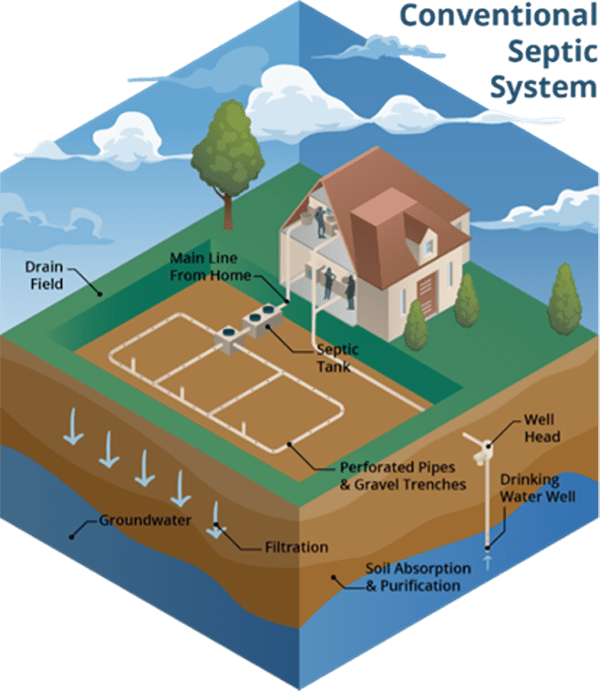
What are the differences between septic and sewer?
Septic System: Wastewater flows from the house through the septic tank and drainfield into the soil, groundwater, and surface water.

Vacuum Sewer System: Wastewater flows from the house into a valve pit located in the public Right of Way (ROW). When full, the valve pit opens, and wastewater is removed by vacuum to a vacuum station that pumps the flow to the County’s regional wastewater facility for treatment.
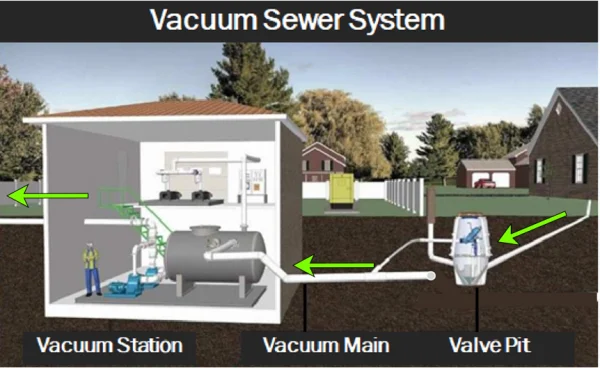
How does a vacuum sewer system work?
A vacuum sewer collection system is a completely closed system, which prevents wastewater exposure to the atmosphere. It has three basic components:
- Vacuum valve pit
- Vacuum pipes
- Vacuum pump station
The process:
- The vacuum valve pit, located in the public Right of Way (ROW), receives wastewater from the customer through a gravity lateral located on private property
- Once a specific amount of wastewater collects in the bottom of the vacuum valve pit, the valve opens and wastewater from the vacuum valve pit is removed by the negative pressure in the vacuum main
- The network of vacuum mains throughout the system deliver wastewater to the Vacuum Pump Station
- The Vacuum Pump Station is typically a two-story concrete building and the sewage pumps and collection tank are in the basement and vacuum pumps and control panels are on the 2nd floor
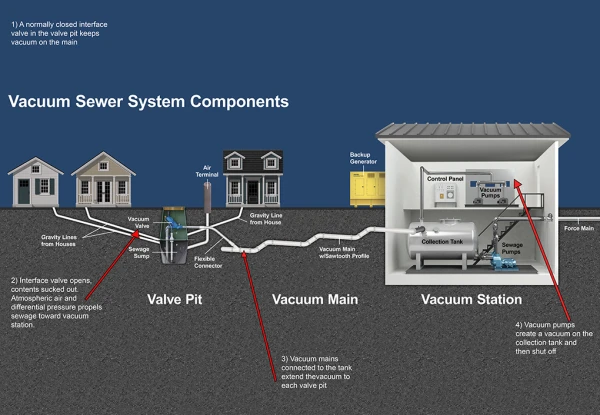
Project examples
At the residence the only above ground structure is an air terminal which is connected to each valve pit. The air terminal, located in the public ROW, admits air into the system and pushes wastewater through the underground vacuum mains to vacuum pump station.
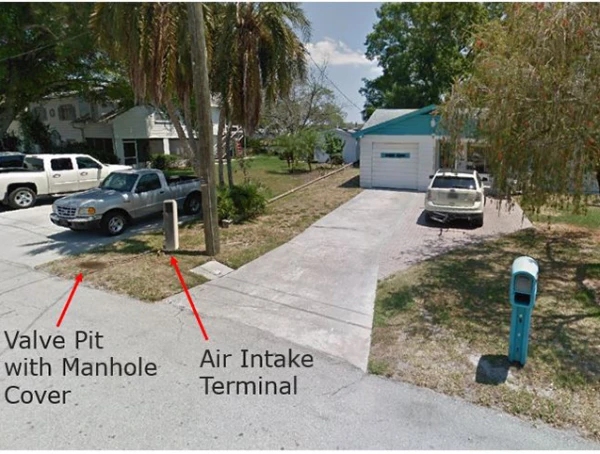
The vacuum pump station equipment typically is housed in a 2-story building: Collection Tank and Sewage Pumps in basement and Vacuum Pumps and Control Panel on ground floor. Typical examples of residential Vacuum Pump Station are illustrated below.
